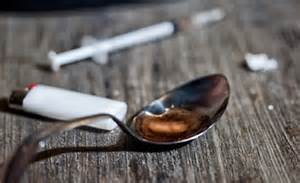 Heroin is making a comeback of epic proportions. As law enforcement has cracked down on pain management clinics that ‘specialize in prescribing pain pills like OxyContin, more and more addicts are turning to heroin. The drug has become increasingly easier to find and while an 80 milligram OxyContin pill sells for $100, an equivalent heroin habit costs less than $60 a day.
Heroin is making a comeback of epic proportions. As law enforcement has cracked down on pain management clinics that ‘specialize in prescribing pain pills like OxyContin, more and more addicts are turning to heroin. The drug has become increasingly easier to find and while an 80 milligram OxyContin pill sells for $100, an equivalent heroin habit costs less than $60 a day.
“For so long Oxy’s were so easy to get, but now it’s getting harder,” an imprisoned addict says. “You used to be able to get a prescription like that. But now, since they are locking up all the pill dealers, doctors and pharmacists, heroin is back big time.” All the people who are accustomed to abusing OxyContin and formed addictions now have to turn to heroin to feed their habit.
Most people buy the drug in small glassine envelopes, each containing a tenth of a gram, for $5 to $12 apiece. Since peaking when the Colombians took over the market, there has been a decline in purity levels and price over the past 10 years, according to DEA testing. In 2000, a kilo of heroin sold for around $70,000 and purity levels were somewhere in the area of 81 percent. In 2009, a kilo was only $50,000 and the purity level dropped to 69 percent. Most heroin used in the US is still grown in Colombia, shipped to Mexico and driven across the border in trucks or cars.
The number of regular heroin users rose from 239,000 in 2010 to 335,000 in 2012 and in New York, the mecca for heroin users in the 1970s, drug enforcement agents are making more arrests for heroin possession and seeing more high volume heroin mills, which are cranking out hundreds of thousands of tiny glassine bags stamped with brand names like iPhone, NFL and Olympics 2012.
It’s just like the movie American Gangster and Frank Lucas in his heyday. “Whatever is new, whatever is hot, whatever is making money, that is what the dealers are going to gravitate to,” the imprisoned addict says. “A couple years ago it was Oxys. Now it’s shifting back to heroin.” Heroin in New York City continues to be highly available, and the demand for heroin continues to be high. Regular users report that they can purchase heroin within a 10 minute walk from anywhere in the city.
Medical admissions show that heroin users are overwhelmingly male (77 percent), older than 35 (75 percent), more likely to be Hispanic (49 percent) than black (27 percent) or white, and likely to report cocaine as a secondary drug of abuse. Heroin admissions to treatment programs have increased 30 percent in the last couple of years and it’s estimated that much more young people are using the drug these days, just not reporting the usage.
The fact remains that heroin is deadly. The drug can devastate the body, destroy the mind and eat away at a person’s teeth and veins. Sustained use will leave a junkie looking like the walking dead. Since the late 1990s intranasal use of heroin has remained more popular than injecting it and hospital admissions show that 61 percent of those who sought medical attention for heroin snorted the drug.
In the forum of drug addiction, snorting, shooting up and getting that next fix becomes the heroin user’s whole world. Nothing else exists, except that incessant and undeniable craving to shoot up, again and again and again. Heroin is an extremely powerful drug that can grab a user in a chokehold and leave them consumed with an addiction that knows no bounds. Unfortunately, the drug is on the rise again in our country.
In the past few years, addiction has hit epidemic levels. The decade long outbreak of the narcotic painkiller abuse of prescription pain pills is over. Law enforcement has clamped down on the trade and distribution of OxyContin and the result is an increased use of heroin, which produces a stronger and more potent high similar to the opioids in Oxy’s.
“We’re seeing a resurgence of heroin,” said Gil Kerlikwske, director of the Office of National Drug Control Policy. “We used to think of heroin as an inner-city problem, but it’s now a problem we’re seeing across the nation among all population and all ages.”
Heroin does not discriminate. White or black, rich or poor, rural or urban. Just as it swept the inner-cities in the 1970s, it is replacing hillbilly crack (Oxys) in rural areas and even making inroads into the suburbs and college campuses. The increase in needle exchange programs and police departments arming their officers with Naloxone, the overdose antidote clarifies the growing problem. Wherever there is a scarcity or a demand, heroin will creep in and fill it. That is just how the drug economy works.


